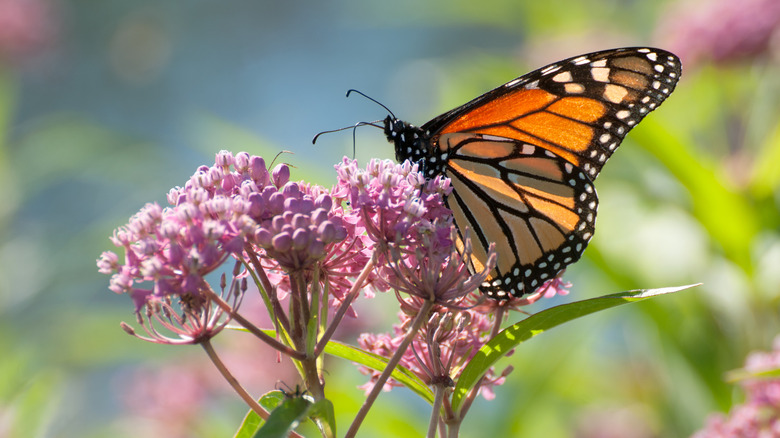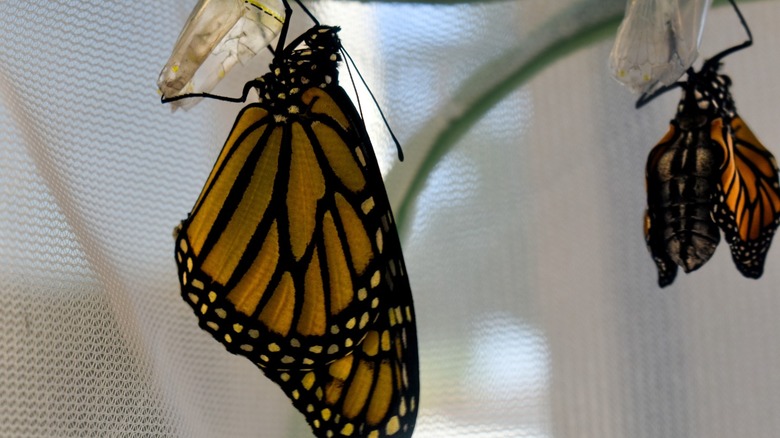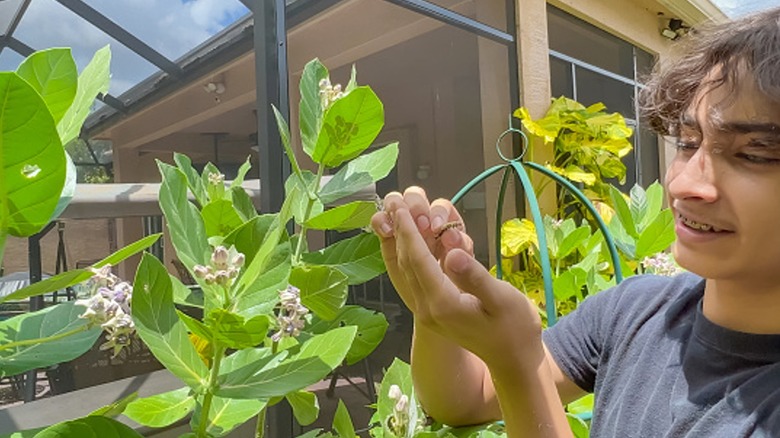How To Use Milkweed From Your Garden To Raise Monarchs Indoors
In 2021, the International Union for the Conservation of Nature changed the status of monarch butterflies to endangered on their Red List of Threatened Species. As a result of a petition and further research, this status was changed to vulnerable in 2023, but just because these beauties are not technically endangered does not mean they are safe. Many environmental factors, including loss of habitat and ecological changes, mean monarch butterflies still need our help, and we can start by growing milkweed outside to feed monarchs that we raise indoors.
Milkweed is vital to raising monarchs because the foliage is all the growing caterpillars can eat. Luckily, many varieties of milkweed (with native perennial options) grow naturally in eastern and central portions of the U.S., where monarchs migrate and breed. If you want something a little more exotic, tropical milkweed is a beautiful annual that makes a stunning addition to flower beds and containers.
Growing and harvesting milkweed for monarch butterflies
Before you start collecting monarch eggs or caterpillars, make sure you have plenty of milkweed to support all of them through the larvae stage. This part of their life cycle lasts up to two weeks. That may not seem long, but in this short time, each caterpillar can eat up to 200 leaves. This means that if you have collected eight caterpillars to raise, you will need access to up to 1,600 individual milkweed leaves. Even if you have a garden full of flowers, keep in mind that milkweed is their host plant, and the larvae cannot feed on anything else. Luckily, milkweed is easy to grow, but you will need to plan ahead.
To be completely self-sufficient, start your perennial milkweed garden the year before you want to raise monarchs. Remember that you shouldn't plant milkweed around your birdfeeders, where larvae easily become a snack for some birds. Plant the varieties that grow best in your region to keep your milkweed garden thriving for many years. Supplementing with annual or tropical varieties can help ensure you have enough food to support monarch caterpillars from the time you collect the egg or larvae until it's time to experience the joy of releasing these stunning butterflies.
Raising monarch butterflies indoors
Once you have an established milkweed garden, you will need a few basic supplies to raise monarchs indoors. Plastic or mesh enclosures help keep caterpillars safe. While you can DIY a temporary home, an option made specifically for these insects is ideal for collecting monarch eggs from your milkweed plants. Caterpillar enclosures provide airflow, but the holes are too small for freshly hatched larvae to escape.
As your caterpillars grow, your enclosure will require frequent cleaning and fresh food for these ravenous insects. The more they eat, the more they poop, so you'll start to notice caterpillar frass (a nice word for poo) collecting at the bottom of the container and anywhere else that they are active. Keep your monarch larvae healthy and thriving by removing the frass every day or so, depending on how many you have. This is a good time to feed monarchs with milkweed leaves, too. The cycle continues until they make their chrysalises, after which they will emerge as fully-grown butterflies.


